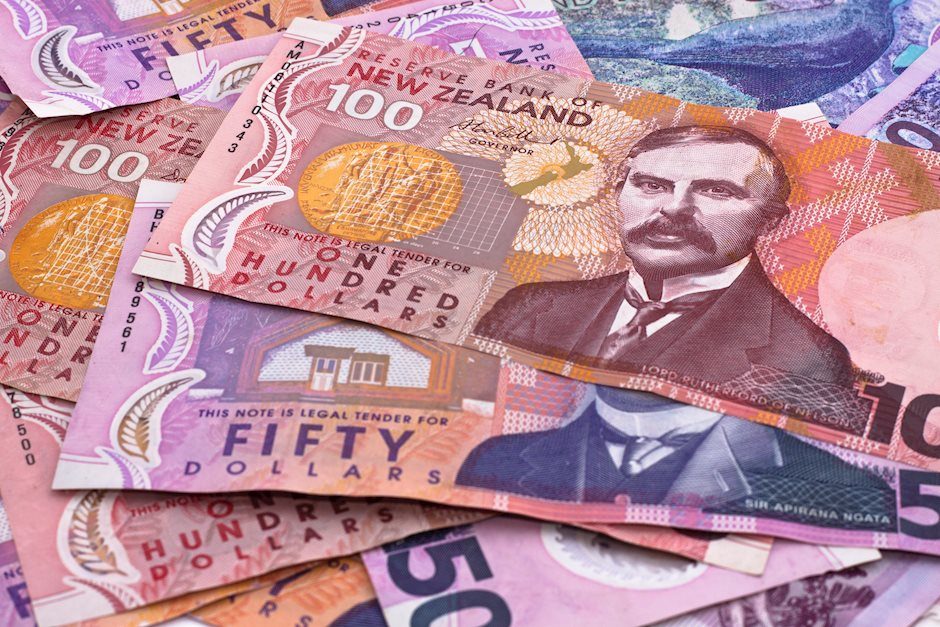NZD/USD remains depressed below mid-0.6100s, key break below Jan 6 low
- NZD/USD continues losing ground on Monday and drops to its lowest level since November.
- A modest recovery in the risk sentiment undermines the USD and lends support to the pair.
- Hawkish Fed expectations, elevated US bond yields support prospects for additional losses.

The NZD/USD pair extends Friday's breakdown momentum below the 200-day Simple Moving Average(SMA) and drops to over three-month low on the first day of a new week. The pair maintains its offered tone heading into the North American session and is currently placed just below mid-0.6100s, down nearly 0.50% for the day.
The decisive break below the January 6 lows has turned up the bearish volume on the pair and may even indicate a reversal of the trend. What's more it is possible to discern a bearish double top reversal pattern on the daily chart, with the neckline, at the aforesaid January lows, now penetrated. If so, the pair could be in for a longish ride down to targets below 0.6000 - 0.5985 as a minimum.
The US Dollar remains well bid amid hawkish Fed expectations and turns out to be a key factor that continues to exert downward pressure on the NZD/USD pair. In fact, the markets seem convinced that the US central bank will stick to its hawkish stance in the wake of stubbornly high inflation. The bets were reaffirmed by the stronger US PCE Price Index data on Friday, which indicated that inflation isn't coming down anytime soon.
Incoming US macro data has taken the edge off the US Dollar's advance, however, after US Durable Goods Orders painted a slightly mixed picture. Although the core figure showed an above-expected rise of 0.7% MoM in January, the all-encompasing print showed a lower -4.5% drop.
Nevertheless, the data is probably not worrying enough to prevent the Fed from continuing to lift interest rates in its battle with the inflation beast, which remains supportive of elevated US Treasury bond yields and continues to lend support to the buck. That said, a modest recovery in the equity markets undermines the Greenback's relative safe-haven status and helps limit losses for the risk-sensitive Kiwi, at least for now.
The fundamental backdrop, however, remains tilted in favour of bearish traders and suggests that the path of least resistance for the NZD/USD pair is to the downside. Moreover, Friday's sustained break and close below a technically significant 200-day SMA adds credence to the negative outlook.
Traders now look to the next item on the US economic docket, Pending Home Sales, which economists forecast to show a 1.0% MoM uptick in January.
Technical levels to watch
Author

Haresh Menghani
FXStreet
Haresh Menghani is a detail-oriented professional with 10+ years of extensive experience in analysing the global financial markets.

















